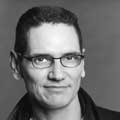 |
|||
|
Reviews La Cenerentola “La Cenerentola” must be counted among Atlanta Opera’s great triumphs….David Gately is one of the smarter stage directors the Atlanta Opera has hired. His musically alert direction elevated what’s fundamentally a traditional production — with sets rented from Kentucky Opera — in savvy ways…To get around the crusty censors for the 1917 premiere in Rome, Rossini and librettist Jacopo Ferretti stripped the fairy tale of the supernatural. There’s no fairy godmother, no pumpkins into carriages, no rats as coachmen. And to avoid audience riot at the sight of a sexy, unshod foot, Cinderella — whose real name, befitting her goodness, is Angelina - leaves behind a bracelet, not a glass slipper. Gately restored some of those familiar folk-magic elements. Alidoro, the prince’s tutor, appears as a beggar and works like a sorcerer-free agent to bring the love couple together. Throughout the show, Gately lets the music inform the movement. Elsewhere, the men’s chorus spin their heads or step out in precise gestures, a delight. The chorus in “Cenerentola” — prepared to perfection by Walter Huff — is only for the men, actually, and in most productions of this opera the women who populate the party scenes are silent extras. Gately here used the composer’s personnel decision to eliminate the band of desperate debutantes all together, focusing exclusively on the sisters and Angelina as the only possible objects of the prince’s affection. — Atlanta Journal-Constitution
La Cenerentola Connecticut Opera's production of "La Cenerentola" ("Cinderella") by Gioachino Rossini was a triumph. It was funny and clever, full of youthful energy and razor-sharp musicianship. Stage Director David Gately was inspired. The placement and movement of characters onstage was clever and often allowed sound to move "in stereo" from side to side. He set the cast in frozen postures during the fantastic vocal ensembles in this opera. Singers would suddenly snap out to sing and then snap back into place. The ensemble finale to Act One, "Mi par d'essere sognando" ("I seem to be dreaming"), was brilliant. It was staged around a dinner interrupted by two fantastic dream sequences that could adorn almost any Tim Burton film. This was a first-rate production. It was laugh-out-loud funny. — Hartford Courant |